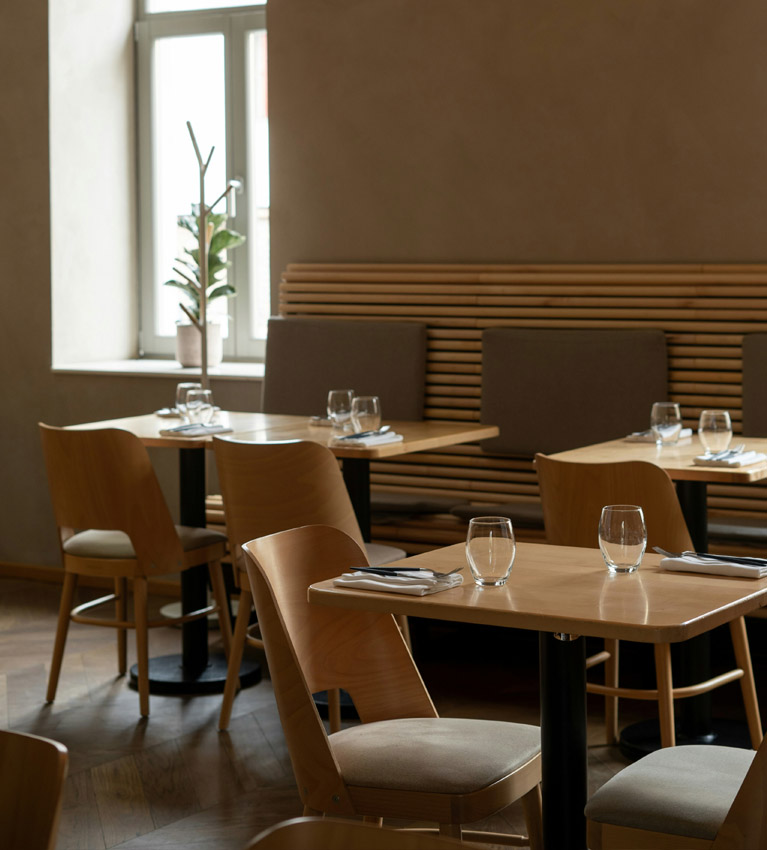
Passion Investments
October 17, 2024

The Dolphinfish Industry in Malta: A Nutritional Treasure
October 15, 2024
HORECA 101 – Issue 17
October 17, 2024‘It can be a wonderful journey in which you experience new and different wines, interact with some of the most memorable and impassioned people you can imagine and if approached correctly can also make an extremely decent return on your investment’
We've all heard this story, right? A friend of a friend bought a few cases of Château Margaux and a couple of bottles of Saint-Émilion back in the eighties for a few hundred euros. Recently, he discovered that his investment is now worth tens of thousands. He’s hailed as a great investor with incredible foresight, ready to reap the rewards.
But hold on a minute. While this surely sounds amazing, there are many factors to consider before he can even consider cashing in. The key factor among them is proving that the wine was stored perfectly over the years and verifying its authenticity. If these bottles were kept in a makeshift wine rack near the kitchen oven, their value is likely close to nothing. Even if the bottles and labels are authentic, the wine inside has probably turned to vinegar and nobody in their right mind is going to buy the wine.
In short, the treasure he thought he had, is only valuable if the wine was stored in ideal temperature-controlled conditions. Otherwise, it's just undrinkable wine in a beautiful bottle.
Of course, this doesn’t mean that money cannot be made from investing in blue chip-wines. Rather the contrary. Recently, fine wine has been hitting the news as outperforming the S&P 500 (Standard & Poor’s Top 500 Companies) and the S&P Global Luxury Index which tracks 80 of the largest publicly traded luxury-goods companies. Live-Ex Fine Wine Index, a global marketplace for wine trading, shows that blue-chip wines have been outperforming S&P 500 for the past 30 years and are not just a passing craze. Careful and well-curated wine portfolios can give a healthy return.
Jancis Robinson, deemed one of the world’s current most influential wine-critics, explained how Ian Mill QC sold 65% of his wine cellar in October 2020, through Zachy’s auction in New York, netting 8 million dollars and breaking several records for the prices of individual wines. He explained how the timing was right. He not only succeeded in selling just as the market was starting to dip, but then President Trump imposed a 25% tariff on wine imported from Europe, just 9 days after the wine arrived in New York.
Ian already had a good name in the wine-world and by organising several wine-dinners he further showed off the quality of the wines, proving that the storage was always pristine. The fact that he sold under his name also helped buyers have confidence in the provenance of the wine since ‘you cannot complain about out-of-condition wine to an anonymous vendor’ as he put it. It must be said that prices have softened since, but had he sold them today he would have still made a right packet.
Strangely, COVID-19 also positively affected the current upward trend. Fine wine has traditionally been seen as a stable and less volatile investment, especially during crises, providing potential portfolio protection and risk mitigation during a market downturn. In fact, in just the first three months of the outbreak, S&P Global Luxury Index plummeted 24% as the pandemic unfolded, whereas the S&P 500 fell a similar 23%, but fine wines dipped just 4%. Similarly, the previous financial crisis of 2008 saw S&P 500 drop a staggering 38.5%, whilst Live-Ex Fine Wines Index only slipped a somewhat negligible 0.6%.
Fine wine is a tangible and consumable asset such that it may increase in value with age for 30 or even 40 years, but the value will increase considerably depending on the scarcity and demand of the bottle. Demand being the main driver behind the increasing value of the wine, and not the actual wine itself, is a major factor.
The wine will eventually decline in value once it reaches its peak drinking window and demand will invariably reduce as the risk of it having gone bad increases. For this very reason, the Customs and Excise department even considers wine as a ‘wasting asset’ and does not levy any tax on any possible capital gains (unless it’s a business), thus adding to the appeal of investing in wine.
Compared to other commodities such as luxury shoes, watches or handbags, wine is particularly unique. The manufacturer of any luxury commodity could scale up production to meet demand, whereas fine wine production is strictly limited by the vintage. Once the vintage is produced, it is impossible to increase production till the next vintage and in which case will be considered a different wine altogether. Therefore, if around 30,000 bottles of say, Chateau Pétrus, are produced annually the number of physical bottles of that vintage will only reduce in number over the years as they are consumed, thus pushing the prices up. If demand remains constant, the value can only increase.
Many Chateaux have now also caught on to this trend by keeping several of their bottles in their warehouse, only to be released at a later stage, thus making further gains on release of a previous vintage that has reduced in availability. You can say that they too, are investing in their own wines, well in the know that the prices will increase substantially, allowing them to further capitalise on a near certain price increase in the future.
With current interest rates at historic lows and inflation rising at a dramatic pace, it’s unsurprising that investors are looking for alternative investment opportunities to add to their portfolio. The history of wine-investment being somewhat safe during crises and the fact that many factors point to big gains in the fine wine market, the current interest in investing in fine wines has increased considerably.
However, not all wines are investment worthy. In fact, most wines are meant to be drunk now and will not increase in any value over the long term. The Live-ex 100 Fine-Wine Index only concentrates on the top 100 sought after wines, meaning that in fact the majority wines are not worth investing in and unless you have a good understanding of what you are doing, the chances of making a dollar or two would be slim at best. Investing in blue-chip wines comes at high cost, where purchasing a case of 6 bottles of first growth wine Château Haut-Brion is easily upwards of €3,000, one needs a decent cash injection to even get started.
Another major obstacle is accessing these investment-worthy wines. Already, scarce upon release and with allocations getting tighter and tighter, it has become harder to acquire these wines. Many of the top Burgundy Chateaux would offer you allocation based on your purchase history and their belief that you will be drinking their wines, meaning that your holding of their wines for speculation of increased value could be seen as betraying their trust.
I believe that investing in wine should not be your main life-investment and it would not be my first choice of investment to fund my children’s education, but it would be my first choice as an alternative, passion investment to add to an already diverse portfolio.
Investing in wine is a long-term investment in one of the finest luxuries in the world and should be regarded as a journey not a one-off shot. Unlike many other investments, investing fine wine not only requires skill and knowledge, but also a dose of patience and loads of passion. It can be a wonderful journey in which you experience new and different wines, interact with some of the most memorable and impassioned people you can imagine and if approached correctly can also make an extremely decent return on your investment.
It is an investment that is not easily ‘liquid’ (excuse the pun) and may take time to sell off and realise the profits, but it is an investment that is extremely personal, hugely rewarding and incredibly exciting. And to top it all, the worst possible scenario is that you or your kids will be drinking some of the best wines on the planet.

Andrew Azzopardi
Andrew is a wine professional with over a decade of experience in the fine wine industry. Founder and CEO of the specialist premium wine company, Vintage ’82 Ltd, he has spent several years supplying some of the largest superyachts on the planet with ultra-luxury wines. He also featured in the Netflix series of ‘Below Deck Mediterranean in 2021 and was awarded ‘Best Male Entrepreneur of the Year 2023’ .
Click here to see Horeca Issue 17 online



